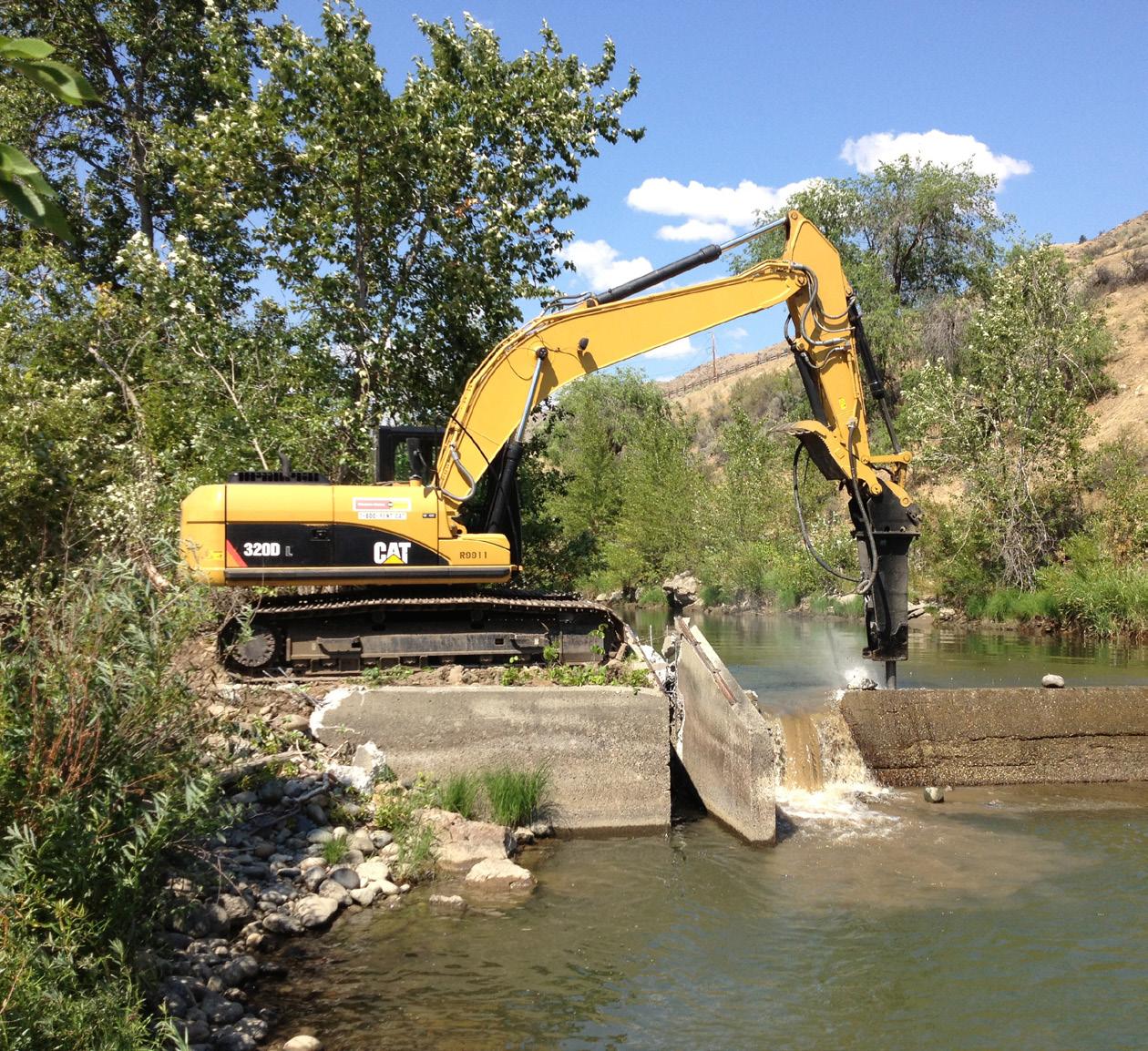Tapping Opportunities at the Bureau of Reclamation’s WaterSMART Program
T
he Bureau of Reclamation’s WaterSMART program includes a wide variety of funding opportunities for water efficiency, drought resilience, watershed management, and water reuse. Over the next 5 years, WaterSMART will disburse an additional $1.9 billion thanks to the Infrastructure Investment and Jobs Act, commonly known as the Bipartisan Infrastructure Law. In this interview, Josh German, the coordinator of WaterSMART Grants, and Dean Marrone, the manager of Reclamation’s Water Resources and Planning Office, give us the inside scoop on the different WaterSMART programs and provide advice to irrigation districts on how to put together a successful application. Irrigation Leader: Please tell us about your backgrounds and how you came to be in your current positions. Josh German: I have worked on WaterSMART programs since 2010. For the majority of that time, I have served as the program coordinator for WaterSMART Grants, a multimillion-dollar grant program focused on water conservation and sustainability. Dean Marrone: I am the manager of Reclamation’s Water Resources and Planning Office. We coordinate WaterSMART by working with other Reclamation offices and collaborating with Reclamation’s partners, who propose and carry out projects. I’ve been with Reclamation for 17 years. Irrigation Leader: Please give us a brief overview of WaterSMART.
Irrigation Leader: Please give us a sense of the overall amounts of funding available through WaterSMART and
32 | IRRIGATION LEADER | July/August 2022
Dean Marrone: In fiscal year 2022, the total final appropriations for all WaterSMART programs was about $159 million. A large portion of that is for WaterSMART Grants, the Drought Response Program, and the Title XVI program. For each funding opportunity that’s made available to potential applicants, Reclamation lists the amount of funding that can be requested for a particular project. Under Water and Energy Efficiency Grants, for example, entities can now request up to $5 million, which is a higher limit than it’s been in the past. Previously, the most an entity could request for a project was $2 million in federal funding, with a nonfederal cost-share required alongside that. Reclamation’s implementation of the Bipartisan Infrastructure Law enables us to offer larger amounts of funding. That’s the case for Water and Energy Efficiency Grants; Drought Resiliency Projects; and a new category of funding, Environmental Water Resources Projects. Irrigation Leader: Does Reclamation intend to maintain that higher upper limit of $5 million past this year? Dean Marrone: Once applications have been received this summer, Reclamation will be assessing project sponsors’ level of interest in larger amounts of funding. But with higher amounts of funding available, it is likely that the maximum of $5 million per project will continue beyond this year. The Bipartisan Infrastructure Law includes $400 million over a 5‑year period for grants that include Water and Energy Efficiency Grants, Drought Resiliency Projects, Environmental Water Resources Projects, and others that Reclamation carries out under the authority of the SECURE Water Act. There’s also $100 million, again over 5 years, for Cooperative Watershed Management Program projects. The Bipartisan Infrastructure Law includes $550 million for water reuse projects under the existing Title XVI program and $450 million for a new category of funding for large-scale recycling and reuse projects with at least $500 million in total project costs that Reclamation is currently working to implement. And then there are others. There’s a new authority for multibenefit projects related to watershed health that’s getting $100 million as well. Each year, Reclamation’s spend plan will include an allocation of Bipartisan Infrastructure Law funding across the various categories that are included in that appropriation. For fiscal year 2022, Reclamation’s spend plan included $160 million of the $400 million for Water and Energy Efficiency Grants, drought projects, and similar projects. irrigationleadermagazine.com
PHOTOS COURTESY OF THE BUREAU OF RECLAMATION.
Dean Marrone: Through WaterSMART, Reclamation works with states, tribes, irrigation districts, municipalities, nongovernmental organizations, and other local entities as they carry out actions to address water management challenges. The program includes a number of different categories of funding. Those include, among others, the WaterSMART Grants program, which supports improved water efficiency; the Drought Response Program, which provides assistance for drought planning and projects that build drought resilience; the Cooperative Watershed Management Program, which encourages diverse stakeholders to form local solutions to address their water management needs; and the Title XVI Water Reclamation and Reuse Program, which typically focuses on large water reuse projects across the West. WaterSMART also includes the Basin Study Program, which involves studies of the major river basins in the West, which are conducted by Reclamation and its partners, and funding for projects that use applied science to develop modeling and forecasting tools.
the amount that an irrigation district might be able to secure for a particular project.










